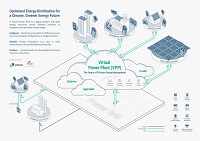For more information, please refer to:
A Singapore Government Agency WebsiteHow to identify
Official website links end with .gov.sg
Government agencies communicate via .gov.sg websites
(e.g. go.gov.sg/open).Trusted websites
Secure websites use HTTPS
Look for a lock ( )or https:// as an added precaution. Share sensitive information only on official, secure websites.
The Energy Market Authority (EMA) has progressively liberalised the retail electricity market to enable more consumers to become contestable. Today, about 75 per cent of total electricity demand in Singapore has been opened up for competition. Large non-residential consumers with an average monthly electricity consumption of 10,000 kWh or more at a single location can choose to become contestable.
As a step towards full retail contestability (FRC), EMA will lower the contestability threshold from the current 10,000 kWh to 8,000 kWh on 1 April 2014, and then to 4,000 kWh on 1 October 2014. This will allow more non-residential consumers to be eligible for retail contestability. In addition, for a non-residential consumer who has multiple electricity accounts at different locations in Singapore, he can choose to become contestable in respect of any of the locations if his aggregated demand meets the prevailing contestability threshold.
Together, the above measures will allow about 70,000 accounts (or 20,000 consumers) to be eligible for retail contestability, an increase from the current 13,000 accounts (or 9,000 consumers). From May 2013, notification letters will be sent to all eligible consumers. More information will also be provided by SP Services Ltd at the following website www.MyPower.com.sg.
EMA is aiming to implement FRC within the next few years after the latest round of liberalisation is completed in October 2014. This will allow the remaining 1.2 million small consumers, who are mainly residential consumers, to have the option to choose whether they want to remain on regulated tariff or switch to contestable status and buy electricity from retailers. As part of the efforts to implement FRC, EMA is studying the experiences of other jurisdictions, such as the UK, Australia and New Zealand. These include measures to lower the costs of implementation and safeguard the interests of small consumers.















